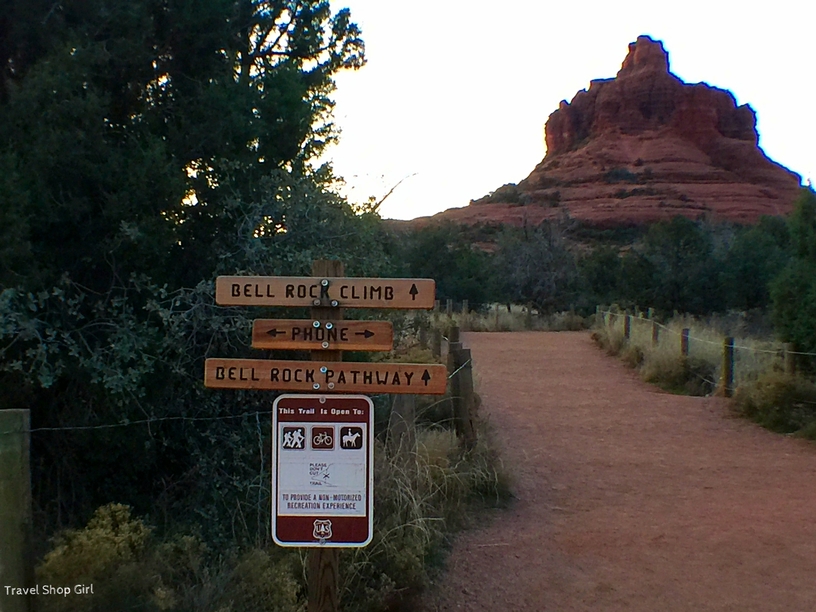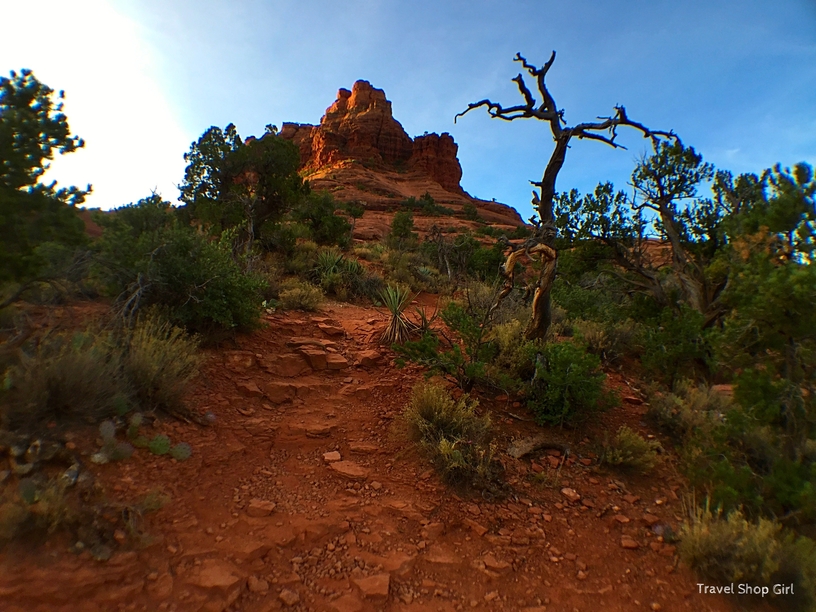
The Red Rocks of Sedona
Some people rely on Wikipedia for everything, But did you know that there are things that Wikipedia can’t tell you about the red rocks of Sedona? Sometimes it’s best to simply experience things for yourself. While you can spend hours online researching, I think the best way to visit is to jump on a plane and make the most of a visit to Sedona in person, which is about 2 hours north of Phoenix.

Why are the rocks in Sedona red and so big? From the Geology of Sedona website:
The deep red color for which Sedona is famous is due to the presence of hematite (iron oxide, otherwise known as rust) that stains the sandstone of the Schnebly Hill and Hermit Shale layers. The steepness of the terrain is due the fact that the top layers of the strata are composed of basalt and limestone, which are harder than the underlying sandstone. Water running off the edge of the escarpment eats away at the lower layers, creating the shear cliffs.

One well-known example of the red rocks of Sedona is the recognizable Bell Rock, which towers over the countryside on the east side of Arizona 179 at an elevation at the summit of 4,919 feet (1,499 m).

Why would you want to visit the red rocks of Sedona? Whether you visit at sunrise or sunset, visitors flock to Sedona for the view, which let’s admit it — is absolutely like no other. Yes, the Grand Canyon, which is two hours north of Sedona is usually where people want to go, but have you ever heard the local saying, “God made the Grand Canyon, but he lives in Sedona”? I decided to go out to Bell Rock to watch the sunrise and to see if I could experience one of the much talked about vortexes of Sedona that allows for such powerful vortex meditation.

In order to hike, bike, or visit any of the red rocks, you need to purchase a Red Rock pass. Since I was going out for the day, I only needed the $5 daily pass, which can be purchased at one of the Arizona Visitor Centers in Sedona or with cash or a debit/credit card at the machine in the parking lot. I didn’t know that in advance so I ended up going to the Circle K on the way and buying a pass there as well as a cup of coffee to help get me going.

My car was the only one in the lot and from what I could tell, I was the only person there at just after 7 am.

The instructions I followed from A Guide to Sedona said to walk up the path and look for Bell Rock trail. The signs said Bell Rock climb or Bell Rock pathway, but both were in the same direction so onward I went. I later read that Bell Rock pathway is a 3.6 mile easy to moderate hike that can take up to 2.5 hours to complete.

Online I read that you can often see footprints of the animals that frequent the area including coyotes, ringtail cats, raccoons, bobcats, or even mountain lions. Fortunately for me, I was all alone on the trail and didn’t see any animal tracks.


I turned around at this intersection where the signs pointed to everything but where I thought I needed to go.

Clearly I needed to head toward Bell Rock so I continued on my morning walk toward it.

Juniper trees are said to twist in the presence of energy vortexes. Whether you believe in the power of the vortex or not, the shape of these trees is still unusual.





The directions I had were for Meditation Perch on Bell Rock and to get there, I needed to count the cairns, a mound of stones that are used to mark a trail.

As long as I counted the cairns and turned when I got between the 10th and 11th one, I would be set.





I found a place to sit quietly and take in my surroundings. I couldn’t believe that I was the only one still there and but for the occasional bird chirping, the silence was deafening, but welcoming. It’s so rare to sit somewhere in complete and total silence with no interruptions and I was appreciative to have that time alone.



Why Meditation Perch? I had heard so much about the energy vortexes that I wanted to experience one for myself. According to the lovesedona.com website:
The vortexes in Sedona are swirling centers of subtle energy coming out from the surface of the earth. The vortex energy is not exactly electricity or magnetism, although it does leave a slight measurable residual magnetism in the places where it is strongest.


As the sun was rising behind Bell Rock, I didn’t see it exactly but I did see the shadow changing over the valley as it rose. I watched in awe as the red rocks transform and become a brighter shade of red by the sun.



When it came time to leave, I marveled at the view all the way back down to my car.



The energy at Bell Rock is supposed to be quite powerful. Also from the lovesedona.com website:
The energy at this vortex is very powerful and strengthens all three parts: the masculine side, the feminine side, and the balance.

All the way back down to my car, I continued taking pictures of the scenery. It almost doesn’t look real, like a Hollywood backlot of sorts, but it’s real.

Hollywood was in love with Sedona in the past and many westerns were filmed here including 3:10 to Yuma (starring Glenn Ford and Van Heflin), The Commancheros (starring John Wayne), and Apache (starring Burt Lancaster) among many others.

Hopefully, more directors will take advantage of the view for future films as the view is a character all on its own.



After about an hour and a half of complete and total solitude, it was only on the way back to my car that I ran into a few other people. I can’t remember any other time in my life being alone for that amount of time and not seeing another human being.

Whether you climb all the way up to Bell Rock or one of the other vortex sites in Sedona or simply drive to one of them and observe the red rocks of Sedona from your car, you must go and revel in their beauty in person instead of reading about it online.
Have you ever spotted the red rocks of Sedona for yourself?




4 thoughts on “What Wikipedia Can’t Tell You About the Red Rocks of Sedona”
Comments are closed.